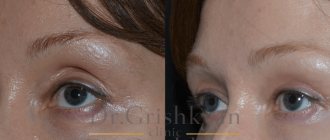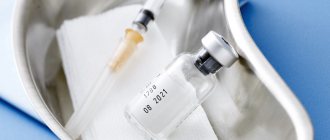Asking questions to your plastic surgeon during your initial consultation is completely normal and even necessary. You will be calmer if you receive the most comprehensive information about the operation you are planning.
Breast augmentation using endoprosthetics is a rather complex procedure. They write a lot about it on the Internet, often discuss it, but for some reason there is often still little information.
When you meet a specialist whom you would like to entrust to perform your mammoplasty, do not hesitate to ask all your questions. And we'll tell you what to remember to ask.
Should I get implants or not?
This is perhaps the most important question on which the final decision will depend. Many patients doubt until the last moment whether they really need mammoplasty.
What if the new breast size doesn’t suit them and makes their figure visually fuller? What if implants are contraindicated for your body type?
Of course, you should not be embarrassed by this question. This is where all further discussions begin.
What will the surgeon do?
- Examines the condition and appearance of the mammary glands.
- Determines the features of the parameters.
- Will offer a solution to the problem if there is one.
- Shows before and after photos on the computer for visual comparisons.
Features of repeated surgery
- If the installation plane is severely deformed or there is repeated scarring, then the pocket is changed. For example, the implant was installed on the surface of the muscle, and during corrective plastic surgery it is placed under the muscle.
- It would be most correct if the secondary operation is performed by the same doctor as the primary one. After all, the surgeon is familiar with your body and knows the technique for placing the previous prosthesis.
- An inframammary incision (submammary approach) is often used. This is explained by the fact that the view is more extensive, the surgeon most accurately removes scar tissue. It's much easier to create or modify a pocket.
- To minimize the risk of ptosis, in patients with thin skin, the implant is placed under the large muscle. The mammary glands themselves are strengthened with fillers.
If capsular contracture is accompanied by rupture of the integumentary tissue, re-plasty involves installing a smaller volume of implant. In addition, only textured models will be used (Micropolyurethane surface)
- If ptosis progresses, it is necessary to combine a breast lift with endoprosthetics.
- When planning to lose extra pounds by more than 7 kg or more, the operation should be postponed until the weight stabilizes.
- Removal of the capsule (partial or complete) when replacing an endoprosthesis is mandatory. Otherwise, particles of old fibrous tissue will grow in, and you will get a feeling of hard and rough breasts.
What breast size should I choose?
Have you already decided on your future breast size? Do you want to get the perfect second or full third size? Sometimes plans have to change. Not all patients easily understand which size will really “beautify” their figure and which will not suit them. Entrust the choice to a specialist. He will take into account your wishes, but he sees better what you need.
What will the surgeon do?
- He will perform a 3D breast modeling on a computer so that you can see approximately how its size will change after surgery and what the new shape will look like.
- Or he will suggest using special sample pads with different sizes. You will see in the mirror how your breasts change. This will help you better determine the size of the implants.
Mammoplasty: 17 questions for your surgeon
You've read a lot. Then we read some more. Then again. And finally, we decided to take the next step - the first meeting with the surgeon regarding breast augmentation surgery has already been scheduled!
To help you on your journey to beautiful breasts, we've put together a list of questions you should definitely ask your potential breast surgeon. Take this list with you if you like! Go over it at the end of the consultation to check if you have forgotten anything.
1. How many breast augmentation surgeries do you perform on average per year? If he performs such operations approximately once a week, this may indicate sufficient experience.
2. Does my physical and emotional condition allow me to undergo this operation?
3. What risks may there be for me due to this procedure?
4. What anesthesia will be used?
5. Will the anesthesia be administered by an anesthesiologist or a nurse?
6. How often do complications occur after breast augmentation surgery in your practice?
7. If I have complications during or after surgery, what actions will be taken?
8. What are the best results I can hope for?
9. How long will the recovery process take and will I need any help during this time?
10. When will I be able to work, drive a car and hold children?
11. What do you think is better for my purposes: silicone or saline implants?
12. What size, shape (round or teardrop) and texture is best for me?
13. What incision location do you suggest?
14. In my case, which location do you think is better: under or above the muscle?
15. What should I do if I am not happy with the way my breasts look after surgery?
16. Will I be able to breastfeed after augmentation surgery?
17. Will pregnancy and breastfeeding affect the shape of my new breasts?
How did you feel after the consultation? Did you feel confident? Did the staff give you proper attention? Did you feel like they were one team? The staff also plays a very important role in the operation process.
On the subject: 12 things to do (or buy) before breast augmentation surgery
Look for a surgeon who will spend 45-60 minutes for a consultation that will leave you feeling confident and good about your upcoming surgery. The surgeon should be open to questions and should never cut you off mid-sentence. The size of the implants is YOUR decision, which you make based on your own wishes and the recommendations of the surgeon. Don't let your doctor tell you what you should want!
Finally, insist on looking at lots of “before and after” photos. Make sure that the person who is advising you is the one who will perform the operation.
Good luck finding a surgeon!
Where will the seams be located?
The location of the sutures depends on the type of surgical approach: in the fold under the breast, along the edge of the nipple areola or in the armpit.
It is believed that the endoscopic approach (in the armpit) is the most aesthetic, since marks from the stitches remain in the armpit area and are therefore hidden from the view of others. But the surgeon may choose a different type of access depending on many factors.
What will the surgeon do?
- Select access.
- He will explain why it is suitable for your case.
Rehabilitation
The secondary operation is much more traumatic, so the recovery process takes longer (but everything is individual). Rehabilitation when forming a new plane or eliminating FCC takes about 4-5 months.
Rehabilitation recommendations are identical to the recovery rules for primary plastic surgery: visiting saunas, steam baths, and hot baths is prohibited; physical activity must be limited until the tissues have completely healed.
The most important thing in rehabilitation is to wear compression garments, since in the first months physiological fluid can get into an unsealed pocket.
What examinations need to be done?
You cannot avoid this stage of preparation. Examinations are a must before any plastic surgery. Mammography, ultrasound of the mammary glands, general tests and more...
What will the surgeon do?
- The surgeon will provide a complete list of all necessary tests and diagnostic methods.
- Additionally, he may ask to undergo other types of examinations.
Reasons for revision mammoplasty
Any medical complications after the initial intervention are reasons why secondary mammoplasty should be performed immediately. These include:
- Capsular contracture. During healing around the surface of the prosthesis, the surrounding tissue transforms into fibrous tissue. For this reason, asymmetry is possible. The causes of the occurrence have not been studied, so there are always risks - 28% of repeat plastic surgery are caused by this particular complication. Scarring is most likely to occur around smooth surfaces.
- Displacement of the prosthesis. Possible if rehabilitation rules are not followed - when sleeping on the stomach or side, when lifting heavy objects.
- Rupture of the implant shell (the patient must remember that the gel located inside the implant shell will not leak out or go anywhere, since the gel has “shape memory”) Occurs due to mechanical damage, for example, during accidents or strong impacts. Therefore, during correction, the filler is replaced with silicone, which does not penetrate into the surrounding tissue even with cracks. Diagnosis of a silicone crack is only possible using a cross-section of an MRI.
- Skin rupture due to incorrectly selected endoprosthesis size;
- Ill-formed pocket. As a rule, a loose installation plane provokes displacement of the implant to the side or up or down, while a too narrow one leads to capsular contracture.
- Synmastia. Occurs when the chest is concave or when using endoprostheses with a wide base.
- Feeling the edge of the shell (contouring, ripples);
- Tissue necrosis, purulent infections, inflammatory processes, bleeding;
- Deformation of the implant as a result of poor quality material;
- Detection of developing oncology;
- Calcification – compaction as a result of salt deposition;
- Double fold.
How long do you need to stay in hospital?
From several hours to 5 days - this is the approximate time of hospital stay after breast augmentation. But everything also depends on certain circumstances: your well-being and general condition after the operation, indications, and the requirements of the surgeon.
According to the rules, you need to be in the hospital for at least 1 day after surgery. Find out how many hours later you will wake up after general anesthesia. Don’t forget to discuss organizational issues: when and where your loved ones can meet you to visit you and take you home.
Indications
Any other indications relate to aesthetic dissatisfaction with the shape of the bust:
- Increase/decrease bust size;
- Complete removal of the endoprosthesis;
- Shape correction after losing or gaining weight;
- Asymmetry;
- Changes due to age or pregnancy;
- Prolapse of the mammary glands. Ptosis occurs when breasts increase by 3-4 sizes. The pressure on soft tissues increases, blood circulation slows down, so the glands gradually atrophy. In this case, correction using laser and tightening is necessary.
- The appearance of folds and ripples in the skin.
- Endoprosthesis expiration date. Applies to products with a shelf life of up to 15 years. Now they manufacture products with a lifetime warranty.
Complications and side effects
The risk of complications after re-plasty increases. The fact is that the elasticity of soft tissues decreases due to secondary incisions. The sutures tighten more slowly, and the number of hardened adhesions increases. Also, more microvessels are damaged the second time, resulting in slower tissue regeneration and repair.
When re-endoprosthetics of the mammary glands is possible:
- The appearance of pain in the correction area. They are felt after leaving the anesthesia and can last up to three days. During this period, the doctor recommends taking painkillers;
- Swelling of tissues. Due to this, pain can be caused, because. the glands are tense. Basically, swelling occurs after lifting or replacing implants. In this case, analgesics are also prescribed;
- Bleeding from the nipples. The probability of developing such a side effect is 48%. Hemorrhages develop as a result of increased fragility of the walls of blood vessels;
- Formation of hematomas. They can grow in the operated area. This indicates blood infiltration. Hematomas resolve on their own if the area of growth does not increase and pain does not appear;
- Seams coming apart. As a result of repeated mammoplasty, the skin becomes thinner, and bruising may appear in the first days of recovery. The complication is aggravated by ignoring the rules of rehabilitation - incorrect wearing of compression garments and early physical activity;
- Tissue infection. The risk of occurrence is 1%. Occurs when immunity decreases or viral infections in the body are undetected before surgery. The doctor prescribes antibacterial therapy;
- Decreased or loss of sensitivity. Develops 3-4 weeks after the procedure. Associated with damage to the nerve trunk;
- Breast asymmetry and tissue deformation.
Author: Mamedov Rusif Bezhanovich Plastic surgeon, Candidate of Medical Sciences Received the “Grace” Award in the nomination “Best Plastic Surgeon for Facial Plastic Surgery”. Practices a unique endoscopic lifting technique, which is performed in the upper and middle zone of the face, as well as in its lower part.










